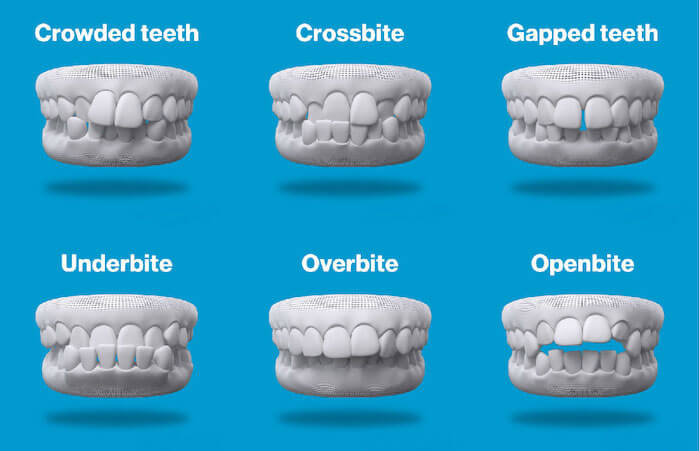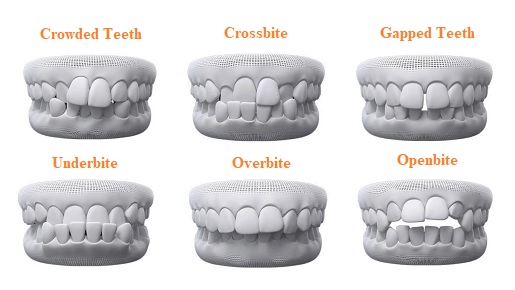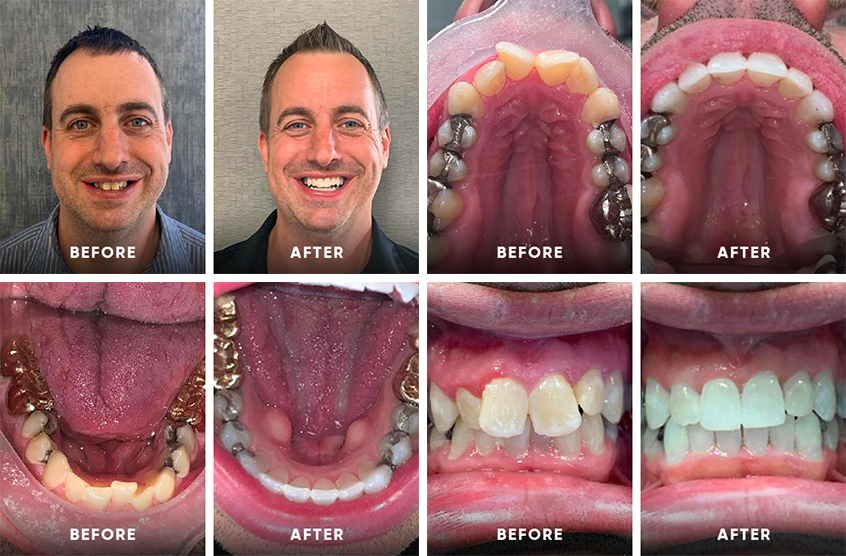Frequently Asked Questions About Invisalign: Everything You Required to Know
Frequently Asked Questions About Invisalign: Everything You Required to Know
Blog Article
Invisalign vs. Standard Dental braces: Which Choice Is Right for You?
When taking into consideration orthodontic treatment, the selection between Invisalign and standard dental braces presents a number of important aspects that warrant careful assessment. Invisalign provides a very discreet alternative with removable aligners, while standard braces offer a much more visible yet efficient option for severe misalignment.
Overview of Treatment Options

In comparison, traditional dental braces consist of metal braces and cables that are adhered to the teeth. This technique uses continual pressure in time to accomplish placement. While effective for complex orthodontic issues, conventional braces call for regular gos to for adjustments and can posture obstacles in preserving oral hygiene as a result of the trouble of cleaning up around braces and cables.
Both alternatives have their advantages, and the option commonly hinges on particular dental conditions, way of life choices, and client conformity. Ultimately, getting in touch with an orthodontic specialist is vital for figuring out one of the most ideal treatment plan tailored to private needs. Recognizing the nuances of each alternative can considerably affect the total success of orthodontic therapy.
Visual Factors To Consider
A substantial variable influencing the choice between Invisalign and typical braces is the visual charm each treatment supplies. Invisalign aligners are crafted from clear plastic, making them basically invisible when used. This very discreet appearance is specifically attracting adults and teens that might really feel self-conscious regarding their orthodontic treatment. The capability to maintain a natural smile throughout the alignment process can considerably enhance the patient's confidence in social and expert settings.
On the other hand, traditional dental braces include metal brackets and cords, which can be more visible. While advancements in orthodontic innovation have brought about the growth of smaller braces and colored elastics, conventional dental braces still maintain a more conspicuous account. For some individuals, the presence of braces may discourage them from seeking required treatment.
Inevitably, the option between Invisalign and conventional dental braces may rest on individual choices relating to looks. Individuals who focus on discretion often favor Invisalign, while those that are less worried concerning exposure may go with traditional braces. Understanding the visual implications of each choice is crucial for making an educated decision that aligns with one's way of life and choices.
Convenience and Convenience

In regards to comfort, Invisalign aligners are detachable, allowing individuals to appreciate their favored foods without constraint and maintain optimal dental health. Cleaning and flossing are simplified, as the aligners can be taken out throughout these regimens, whereas typical dental braces require cautious navigating around wires and brackets.
Additionally, Invisalign's modern system permits for less orthodontic brows through. Individuals usually obtain numerous sets of aligners at when, which can enhance the therapy process and minimize time spent in the orthodontist's chair. On the other hand, conventional braces require normal adjustments, making them much less practical for those with active schedules. Invisalign. In general, the convenience and comfort of Invisalign make it an appealing choice for lots of individuals looking for orthodontic treatment.
Therapy Duration and Performance
While both Invisalign and traditional braces work in fixing oral imbalances, the duration of therapy can vary substantially between the 2 choices. Typically, Invisalign therapy can take anywhere from 12 to 18 months, depending on the intricacy of the instance. The clear aligners work by slowly changing teeth right into their preferred positions, and regular follow-ups with an orthodontist assistance make sure progress remains on course.
In comparison, typical braces frequently call for a longer dedication, normally ranging from 18 months to three years. This is due to their fixed nature and making use of brackets and cords, which can be a lot more reliable for extreme imbalances and complex cases (Invisalign). The therapy efficiency of traditional braces is well-documented, as they enable accurate adjustments and better control over tooth activity
Eventually, the choice between Invisalign and standard braces may rest on both the awaited therapy duration and the particular dental issues handy. Consulting with an orthodontist is essential, as they can supply tailored suggestions based on specific demands, making sure the selected method lines up with wanted timeframes and results.
Cost Contrast and Insurance Coverage Alternatives
Price plays a substantial role in the decision-making process for individuals taking into consideration orthodontic treatment, whether choosing for Invisalign or typical dental braces. Typically, the price of Invisalign arrays from $3,000 to $8,000, while conventional braces Source normally cost between $2,000 and $6,000. Elements influencing these costs consist of the intricacy of the instance, the duration of therapy, and geographical area.
Numerous dental insurance plans supply partial protection for orthodontic treatments, however the specifics can vary widely. Typically, conventional braces may be a lot more often covered by insurance policy plans compared to Invisalign, which some insurance providers categorize as a cosmetic treatment.
Furthermore, several orthodontic methods supply versatile payment strategies, making both therapy alternatives a lot more available. Individuals need to ask about potential financing alternatives and price cuts for ahead of time payments. Reviewing the overall cost, consisting of insurance coverage benefits and repayment strategies, is important for making an informed choice that lines up with both aesthetic preferences and budget considerations.

Final Thought
In recap, the choice in between Invisalign and conventional braces depends upon several variables, consisting of aesthetic preferences, comfort, treatment duration, and price. Invisalign offers a very discreet, removable option that facilitates oral hygiene and nutritional flexibility, while conventional dental braces might be better for complex oral concerns and frequently come with a reduced cost point. Ultimately, consultation with an orthodontist is important to assess private scenarios and identify the most proper treatment alternative for accomplishing optimum oral placement.
When thinking about orthodontic treatment, the choice between Invisalign and conventional imp source braces offers several essential variables that warrant cautious evaluation.Contrasting Invisalign and typical braces discloses unique treatment choices for orthodontic adjustment.While both Invisalign and typical dental braces are effective in fixing oral misalignments, the period of therapy can vary hop over to these guys significantly in between the two choices.Price plays a considerable function in the decision-making process for people taking into consideration orthodontic therapy, whether choosing for Invisalign or typical dental braces.In summary, the option in between Invisalign and typical braces pivots on numerous aspects, consisting of visual choices, convenience, treatment period, and cost.
Report this page